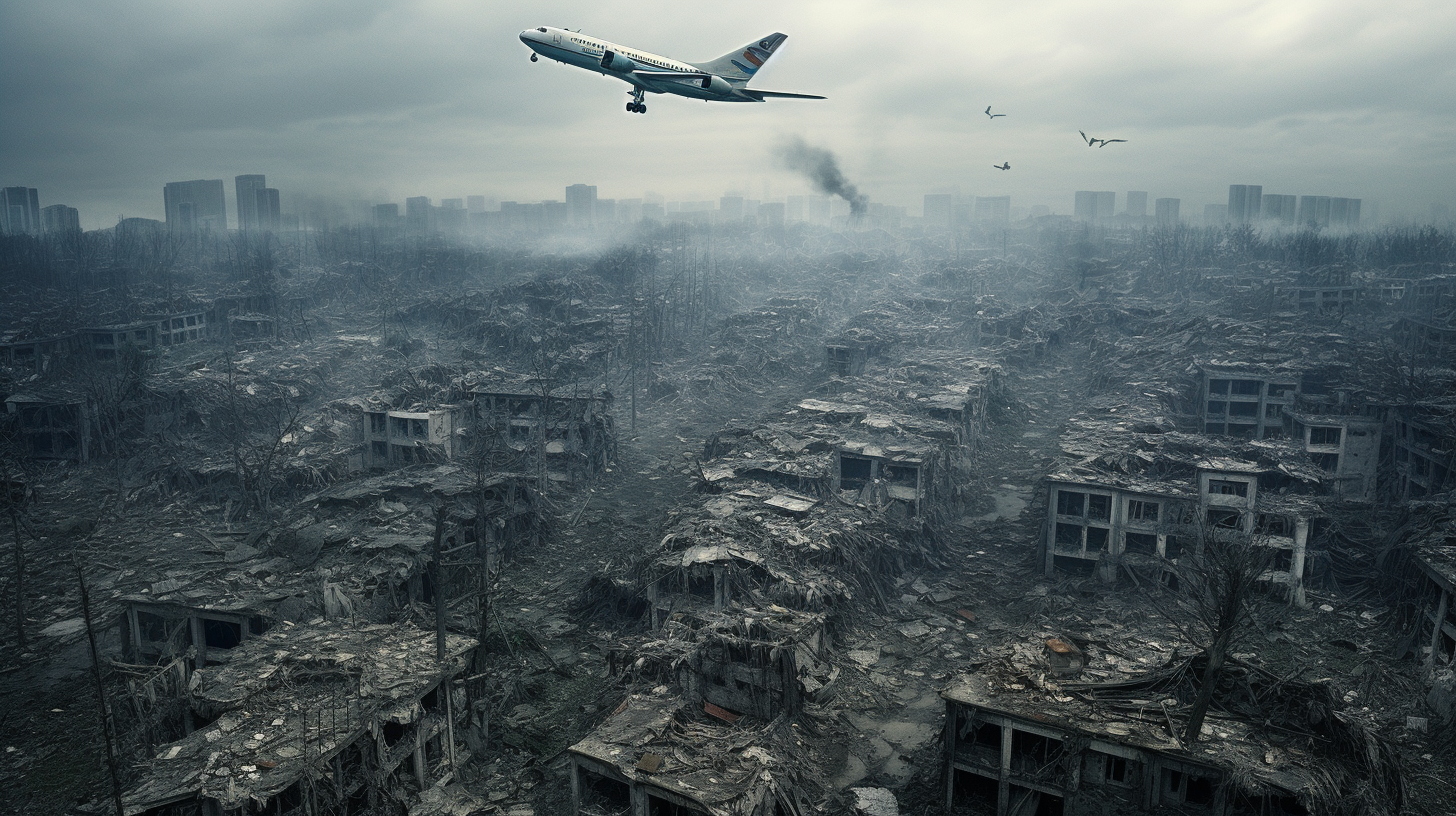Through the broken panes of high-rises that pierce the sky, nature gazes back at us, its tendrils winding up the scaffold of our past ambitions. As waves of urban flight become the sepia-toned memories of the hopeful, we are poignantly reminded of the vast emptiness they left behind. Clambering through the barricaded boulevards and overgrown avenues of our cities-turned-ghost towns, we witness the shifted paradigms of civilization—where once was the hustling hubbub of city life, now lies a solemn silence.
Our journey through these Vistas of Vacancy uncovers a narrative that threads together desolation with discrete pockets of eerie beauty. In the heart of what used to be downtown, under a blanket of smog, now only stifled coughs from the resilient weeds that have spiked through concrete crackles disturb the stillness. Integrated smart-buildings, their purposes once heralded as the pinnacle of urban living, stand mute—solar panels cloudy with dust, wind turbines frozen in a morbid stillness. Without the lifeblood of their inhabitants, these structures are the hollowed remnants of a failed utopia.
In search of the lost, we find the ignored—communities on the fringes who were left forsaken as the fortunate fled. The outskirts of abandonment are marked not just by the empty shell of infrastructure but also by those who linger, disillusioned. Their stories weave through the detritus like roots seeking water, desperate for a grip in a world that’s crumbling beneath their feet. Stories of small battles against nature reclaiming what was hers, as the destitute grapple with frequent floodings recasting their homes as modern-day Atlantises.
Yet, it is not just the physical that has eroded. The exodus instigated a cascade of abandonment—schools without children’s laughs, playgrounds void of motion, hospitals silent but for the groaning of shifting rubble. Our societal fabric has been picked threadbare, with each left-behind street corner whispering tales of camaraderie and strife once vibrant and now fading into oblivion.
Rummaging through the relics of our consumerist culture, empty commercial temples to purchasing power are poignant markers of an economy that fizzled out. Here lies the irony—a world so focused on the material, leaving nothing but the immaterial memories and the stark reality of infrastructural skeletons.
Certain quarters of the city, which once flashed with neon signs and the chime of digital slots, now twitch with a different kind of energy. Feral creatures have replaced the patrons, and the house always wins with the proliferation of its more adaptive players—the animals that have made these concrete jungles their domain.
Yet, amidst the decay, there are artifacts of defiance: murals stretch across facades, untended gardens burst with verdure, and communities of the residue form microcosms that mimic the old world. These acts of quiet rebellion, the dogged persistence of life, provide a stark contrast to the silhouettes of abandonment.
But let us not romanticize this regression into a peaceful reclaiming. The expulsion was often violent, the decline rapid and ruthless. As the edge of night cloaks the derelict cityscape, we are reminded of the fears and dangers laced within these ruins—a broken glass underfoot is a quiet reminder of the tension between past and present.
The article’s sobering conclusion rests not just on lamenting the loss but also on recognizing the layers upon which the future can be built. A mosaic of ruin and growth, informing us in the harshest of whispers about the cost of negligence, and the resilience of nature and humankind.
